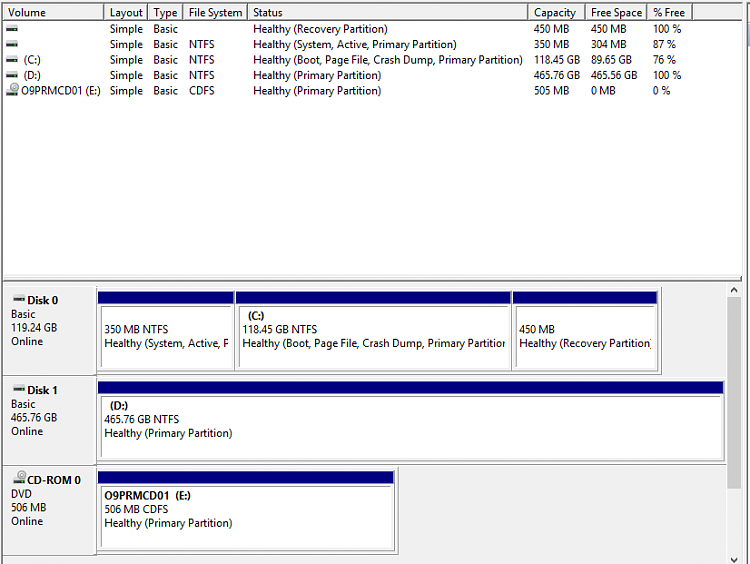New
#1
Hidden partitions after cloning
This is a computer I built several years ago (E6300).
I have upgraded from Windows 8.1 to Windows 10 Pro.
I have cloned the HDD to an SSD. (I eventually figured out how using Macrium Reflect. There was another D: partition for which I used Aomei Partition Assistant to combine it with C:.)
This is what Disk Management shows now:
Notice that the recovery partition is empty, although there is something in the other hidden partition.
1. What is typically in a recovery partition? Anything related to using Create a Restore Point?
2. What might be in the other (350MB) hidden partition?
3. Can either of these be safely deleted? Not that the space is needed but I'd just like to know.
I understand that a partition ahead of C: cannot be combined with C:, but the unused 450MB recovery partition could be.
Suggestions/discussion appreciated.
P.S. I cloned another computer and the recovery partition ended up being called D:. ???



 Quote
Quote